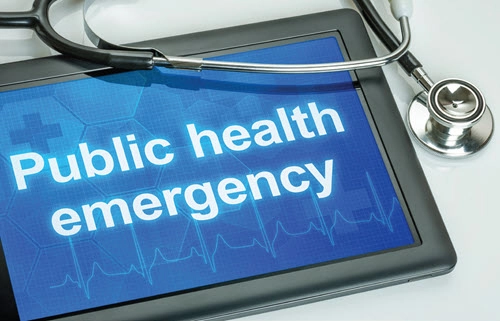Don’t Miss Recent Exceptions that Impact Your General Surgery Practice
Check out PHE-related regulations. Even as COVID-19 cases are ramping up in many locations, regulatory relief is on the horizon to help your general surgery practice keep pace with the compliance demands. Now: In several recent updates, the Department of Health and Human Services (HHS), CMS, and others have rolled out new policies to help facilitate COVID-19-related patient services during the pandemic. Read on for two new updates you need to know. 1. Know the PHE Extension Specifics With no immediate end in sight for the pandemic, HHS Secretary Alex Azar extended the COVID-19 public health emergency (PHE) for another 90 days, effective Oct. 23 and running through Jan. 20, 2021. This is the third PHE extension HHS has made related to the coronavirus since its original declaration on Jan. 27, 2020. The agency first extended the PHE on April 21, and then again on July 23. Impact: “This renewal extends the wide array of waivers and flexibilities that have been issued by HHS in response to COVID-19,” says attorney Madison Pool with Arnall, Golden, Gregory LLP in online analysis. The waivers include many Medicare policies that impact general surgery practices. But remember, the feds can roll back policies at any time, and the Secretary can terminate the PHE at his discretion. Review the PHE particulars at www.phe.gov/emergency/news/healthactions/phe/Pages/covid19-2Oct2020.aspx. 2. Get the Scoop on 11 New Telehealth Additions On Oct. 14, CMS announced that it was continuing its pro-telehealth push with more PHE-related options. “For the first time using a new expedited process, CMS is adding 11 new services to the Medicare telehealth services list since the publication of the May 1, 2020, COVID-19 Interim Final Rule with comment period (IFC),” says the agency in a release. Since the expansion is already effective, eligible providers can expect payment for the new options immediately and through the duration of the pandemic. “These new telehealth services include certain neurostimulator analysis and programming services, and cardiac and pulmonary rehabilitation services,” CMS says. Reminder: With the publication of two interim final rules in March and May, CMS already significantly expanded the telehealth services list, including options like emergency care, nursing home visits, and physical therapy. If you add the 11 new services to the already lengthy expansion list, Medicare will now reimburse eligible clinicians for 144 different telehealth services. Plus, a whopping 12.1 million beneficiaries have received Medicare fee-for-service (FFS) care through the expansion, the release suggests. Coding: CPT® provides Appendix P and “a five-point star symbol to denote that you can bill these code as a telehealth service,” says Melanie Witt, RN, MA, an independent coding expert based in Guadalupita, New Mexico. However, you won’t find temporary PHE telehealth services identified with this symbol or in Appendix P. Resource: To find the current list of telehealth services for the COVID-19 PHE, including the recent additions, you’ll need to turn to www.cms.gov/Medicare/Medicare-General-Information/Telehealth/Telehealth-Codes. How to: You must provide the following specific information when billing for telehealth services covered under the COVID-19 PHE: 


